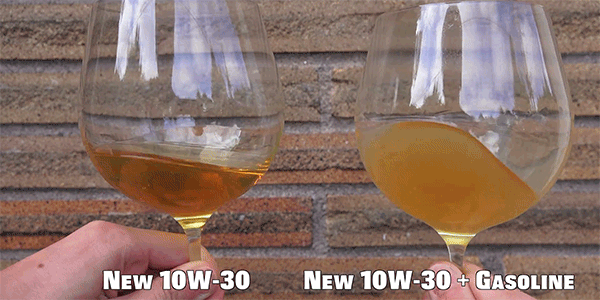Here’s the Real Reason You Should Never Warm Up Your Car

Real reason: It takes longer, wastes fuel, and actually increases the wear and tear on your engine.
Let me summary it for you in simple way:
– it is always the best that when you start to drive your engine is warm, right? Yes, driving the car with cold engine is bad.
– so in the cold winter morning, you want the engine to get warm as soon as possible.
– and the best way to get the engine warm up quickly is to drive the car!
– what some people do is this bad way: they start up the engine, and let the engine run idle for a few minutes, to let the engine warm up, then drive away. This is BAD, because in this way the engine will well get warmed up, but in a very slow way, so you are actually let your car engine run in the BAD COLD CONDITION for a much longer time, when compared to really driving the car.
– by driving the car slowly after cold start, the oil inside the engine will warm up much faster, so the lubrication is taking place also much better, it is then good for the engine.
注:对柴油机而言,偶尔几次怠速加热发动机,也不是什么很大的危害。
Less time to warm up the engine = less wear
On cold winter mornings, some folks will fire up their cars and leave them running for 10, 20, maybe even 30 minutes, thinking they’re reducing wear and tear (减少磨损) by letting their cars warm up gently. But Jason from Engineering Explained is here to explain why that’s a bad idea for your car.
The conventional wisdom that you should idle (怠速) your car up to operating temperature comes from the days of carburetors (化油器), which needed several minutes of idling to get to an operating temperature where they’d run smoothly. With fuel-injected engines, the ECU can adjust itself to idle perfectly even in sub-zero weather.
And as Jason explains, idling an engine doesn’t really build up much heat at all, compared to driving it.
Jason goes through the details of what happens in a cold engine, and points out the hidden damage of letting your car idle for a long time on a cold day: Engine oil dilution (稀释). It turns out, while you might have thought that letting your car slowly warm up was reducing wear and tear, all that idling time leads to raw gasoline seeping into the oil, breaking down the oil’s lubrication (润滑) properties and increasing the wear.
So what should you do? Start it up, make sure all your windows are clear of ice/snow/fog, and just drive the thing! The engine will warm up faster
, and therefore you’ll get nice warm heat coming out of the vents sooner, which is what you want anyway.
Watch for yourself and let a real engineer explain why you should stop warming up your car.


Stationair opwarmen maakt auto KAPOT, kost vermogen
http://www.autoblog.nl/archive/2010/12/26/stationair-opwarmen-maakt-auto-kapot-kost-vermogen
如何热车 — 预热汽车的意思就是慢慢开动汽车走一两公里让汽车慢慢活动活动再高速开跑,就象比赛前的小跑动热身一样。
“化油器车的燃油雾化差,容易熄火,所以需要在原地怠速热车。但目前大多数都是电喷车了,技术有很大改进,热车不需要在原地等上几分钟,只需点火等待30秒左右,低挡低速走一小段路,比如缓慢滑行出小区。让变速器、差速器、轮芯轴承各部位都能得到润滑,水温表也开始动了,就可正常行驶。”
浙江中现汽车销售有限公司的汽车技师华胜高也持同样说法。除了化油器的车,大多数汽车原地怠速热车确实没有必要,既耗油又费时还不环保。“一发动引擎后就立刻上路,只要不猛踩油门飙车,保持低速运转,其效果是和怠速运转相同的。”
我们物理课上学过,液体温度上升到沸点就会汽化。而汽油的完全汽化需要的工作温度是90-110℃。当汽油尚未汽化而呈“湿湿”的液态时,不容易燃烧发动引擎。一具冷引擎要达到正常工作温度约需七八分钟到十几分钟不等,依车种不同而定。在这段时间中,不需要原地热车,只要不以高速行驶就无妨。
变速箱齿轮油在冷车时都流到变速箱下半部。只有当行车时才会因齿轮的运转而将底部的齿轮油带起,润滑上半部。这也是为什么大多数车子在冷车时换挡生涩的原因。其解决之道是低速行驶热车。
http://auto.163.com/11/1227/09/7M97CT6O00084K0E.html?f=jsearch
Standkachel – nooit meer ruiten krabben
1.594 €
DIESEL AUTO:
Bij de Webasto-montagekits profiteren dieselrijders dubbel! Dieselauto’s zijn af fabriek uitgerust met een ‘hulpverwarming’ die voordelig kan worden omgebouwd tot een volwaardige standkachel. Bij deze modellen is de halve standkachel dus al ingebouwd en betaald.
https://www.webasto.com/nl/markten-producten/auto/standkachel-inbouw/
专家给您冬季热车的建议
如何热车
不热车对发动机的影响很大,发动机的正常工作温度大约在摄氏90~110度之间。
冬季、特别是严寒的冬季,原地怠速热车很容易伤害发动机,建议司机采用低转速
缓慢行驶的方法热车。
正确方法是,启动发动机后,30秒至一分钟后便可上路。在3公里以内不要以高转速
行驶,尽量让发动机转速不超过3000~3500转为限,一般保持2000转,否则发动机及
变速箱所受到的激烈磨损可是无法复原的。
待发动机温度上升至正常工作温度后,再加速行驶。
汽车空转有害健康
根据明尼阿波利的反空转条例,排放气体对人体健康有害,尤其对儿童有害;研究
认为空气污染与癌症、心肺疾病、哮喘和过敏等有联系。
http://www.epochtimes.com/b5/14/12/16/n4319413.htm
to be continued